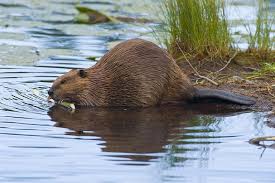Neither of these is going to show up in the NFS litigation summaries because the Forest Service is not a party to the litigation (yet), but the trapping at issue occurs on national forest lands, and the Forest Service does have the authority to regulate trapping that occurs on national forest lands.
Two environmental groups have sued the Oregon Department of Fish and Wildlife for failing to ban the trapping of Humboldt martens in Oregon’s coastal forests. Humboldt martens were proposed for listing as a threatened species in October. Threats include “loss of habitat, wildfire, changing climate, trapping, vehicle mortality, vegetation management, exposure to toxicants, threats from predators and effects associated with small and isolated populations.” According to the Center for Biological Diversity news release, “Following the largest mammal survey ever conducted in the state, researchers from Oregon State University and the U.S. Forest Service recommended eliminating trapping of coastal martens as a first step in rebuilding the state’s imperiled populations.” Good for the Forest Service. Their involvement may have something to do with the fact that their “vegetation management” could be curtailed if the species is listed. Perhaps they will intervene in the lawsuit on the side of CBD et al? Probably as likely as them invoking their own authority to regulate trapping as a use of national forest lands. But that may be better than being added as a defendant.
The Environmental Protection Information Center has filed a notice of intent to sue the federal USDA Wildlife Services. According to this article, they allege that the agency’s program for killing beavers harms endangered fish because beavers “benefit salmon and steelhead by building better habitat conditions, including creation of ponds used by salmon and increasing stream flow in summer months.” They are asserting that the Wildlife Services must consult on the effects of this program with the National Marine Fisheries Service. While the Forest Service is not mentioned, nor is the geographic scope, this certainly includes practices on national forest lands. The Forest Service has a Memorandum of Understanding with Wildlife Services, addressing among other things “managing damage caused by indigenous, non-native and feral vertebrates on NFS lands,” in which the Forest Service is designated as the lead agency for NEPA compliance. While the MOU acknowledges the need to comply with the Endangered Species Act, this responsibility is not designated. It appears that the Forest Service at least shares any obligation to consult with Wildlife Services and could be named as a party.


And here’s something else along the same lines. https://www.westernwatersheds.org/2018/12/advocates-target-bear-baiting-in-grizzly-country-in-id-wy/
“The U.S. Forest Service used to manage and restrict bear baiting on National Forest lands but in 1995 the agency adopted a “hands-off” policy that largely relegates management of the practice to individual states… Today, wildlife advocates notified the federal government they plan to legally challenge its authorization of bear baiting on National Forest System lands in Idaho and Wyoming for violations of the Endangered Species Act, citing harms to protected grizzly bears and new science on impacts to grizzlies from baiting. The notice starts a 60-day clock, after which they will file the complaint.”
And in case there are any doubts that the Forest Service can regulate hunting and the like: “A federal judge has dismissed a lawsuit from hunters seeking to overturn a ban on hunting deer with dogs in the Kisatchie National Forest…” (for the second time). And this was a forest plan decision.
https://www.thetowntalk.com/story/news/2018/12/25/lawsuit-seeking-reversal-kisatchie-deer-dog-hunting-ban-dismissed/2411295002/